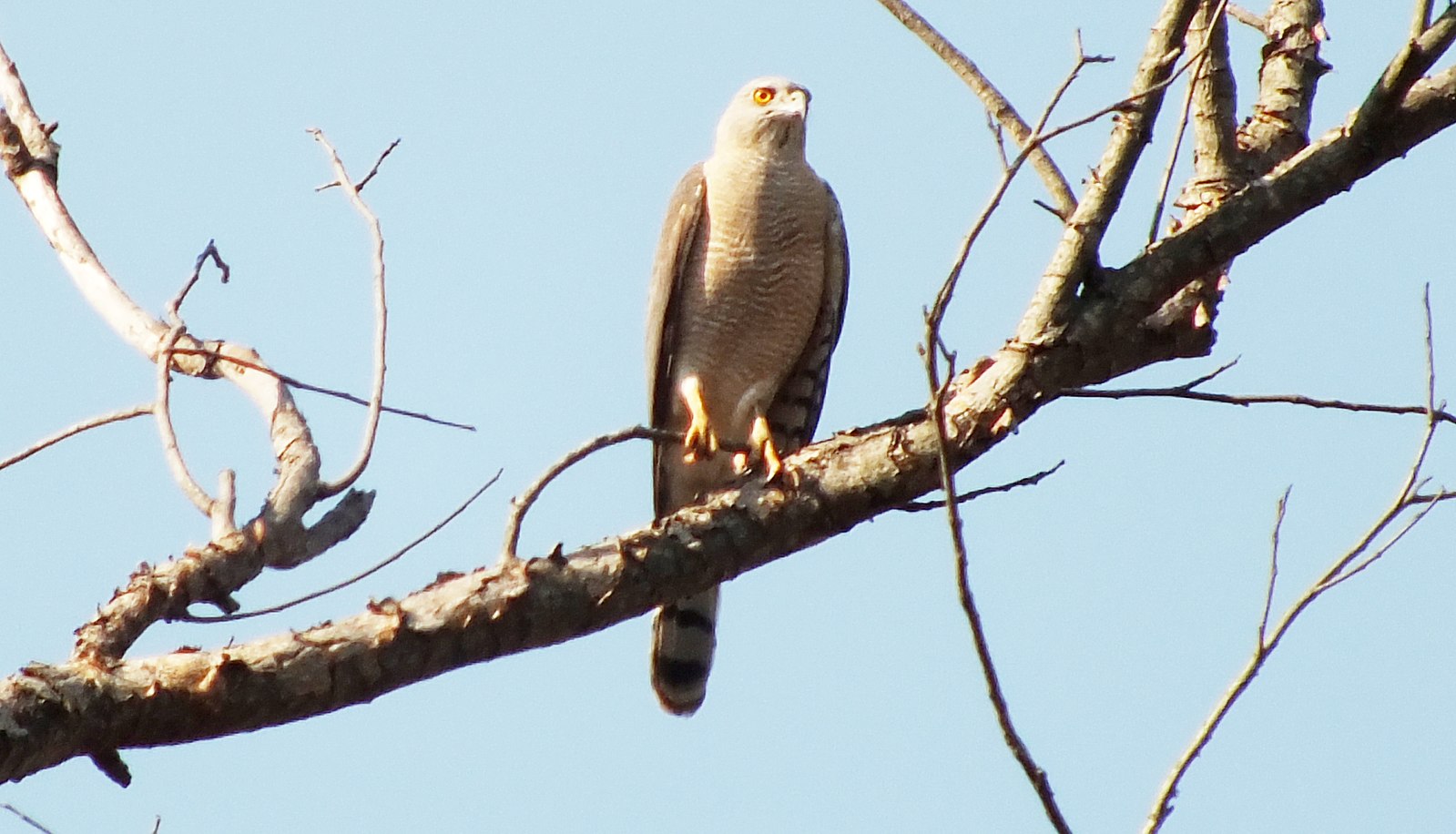Shikras, also known as little banded goshawks, are small birds of prey that belong to the family Accipitridae. They are widely distributed in Asia and Africa and are known for their sharp two-note call and typical flap and glide flight. While shikras are known to have a varied diet that includes rodents, squirrels, small birds, reptiles, insects, and occasionally carrion, there is no specific information available on whether they dive for fish.
Shikra Characteristics
Size and Appearance
- Shikras are small birds of prey, with a length of 26-30 cm and a wingspan of 55-72 cm.
- They typically weigh between 100-250 grams, depending on the subspecies.
- Adult shikras have a whitish underside with fine rufous bars, while the upperparts are grey. Males have a red iris, while females have a less red (yellowish orange) iris and brownish upperparts with heavier barring on the underparts.
Flight and Hunting
- Shikras have a typical flap and glide flight, with flaps and glides.
- During the breeding season, pairs soar on thermals and stoop at each other.
- Shikras are tenacious hunters and employ a range of hunting strategies, such as diving from a concealed perch, ambushing birds, snatching prey from tree trunks and foliage, and hunting in flight.
Nesting and Reproduction
 Image source: SHIKRA by Shiv’s fotografia
Image source: SHIKRA by Shiv’s fotografia
- Shikras are monogamous and form pairs for life.
- They are solitary nesters and build a relatively small nest made of sticks, often placed in the high fork of a woodland or exotic tree.
- Both the male and female work together to construct the nest, with the female doing about twice as much of the work as the male.
- The female lays a clutch of 2 to 4 eggs, which are pale bluish grey and stippled on the broad end in black.
- The incubation period lasts for approximately 3 weeks, during which time the male brings food to the female, who then feeds the young by tearing off tiny pieces of food with her beak.
Population and Conservation
- The total population size of the shikra is estimated to be around 500,000-999,999 mature individuals.
- In Europe, there are 50-210 pairs, while in the Arabian region, there are 600 breeding pairs.
- Potential threats to shikra populations include habitat degradation due to wood harvesting, overgrazing, insecticide use, and electrocution on power lines.
Conclusion
While shikras are known to have a varied diet that includes small reptiles, there is no specific information available on whether they dive for fish. However, their tenacious hunting skills and adaptability to different environments suggest that they may be capable of employing a range of hunting strategies, including potentially diving for fish in certain habitats. Further research would be needed to confirm if shikras engage in this behavior.
References:
– The Peregrine Fund – Shikra
– Thai National Parks – Shikra
– Animalia – Shikra
– Wikipedia – Shikra


